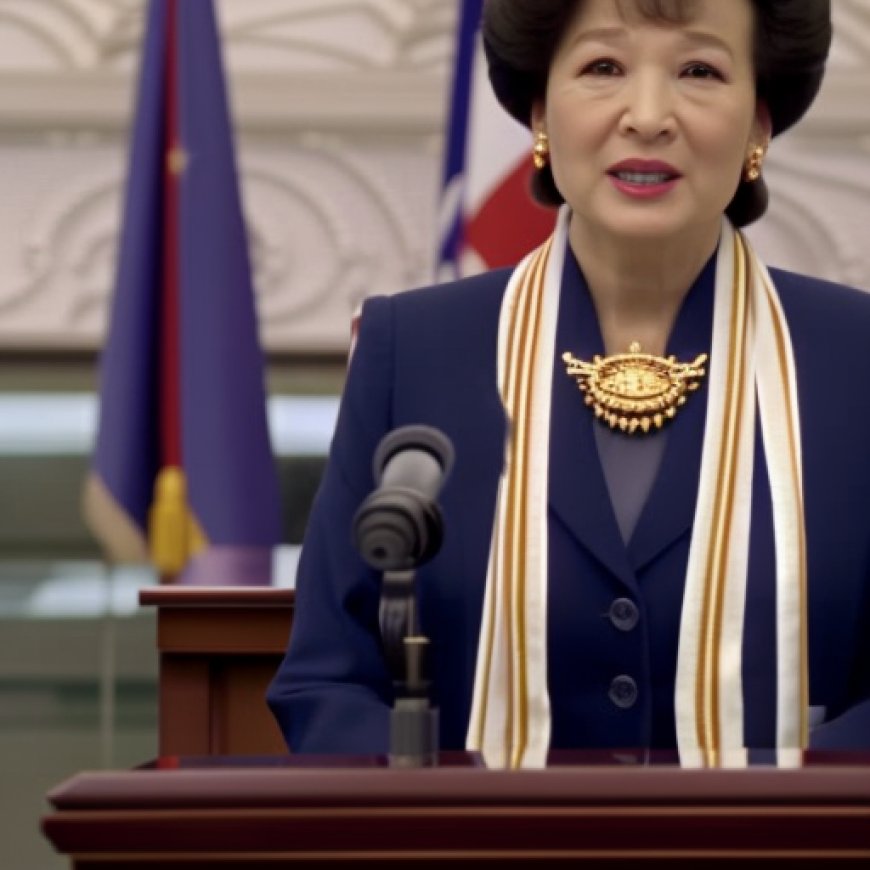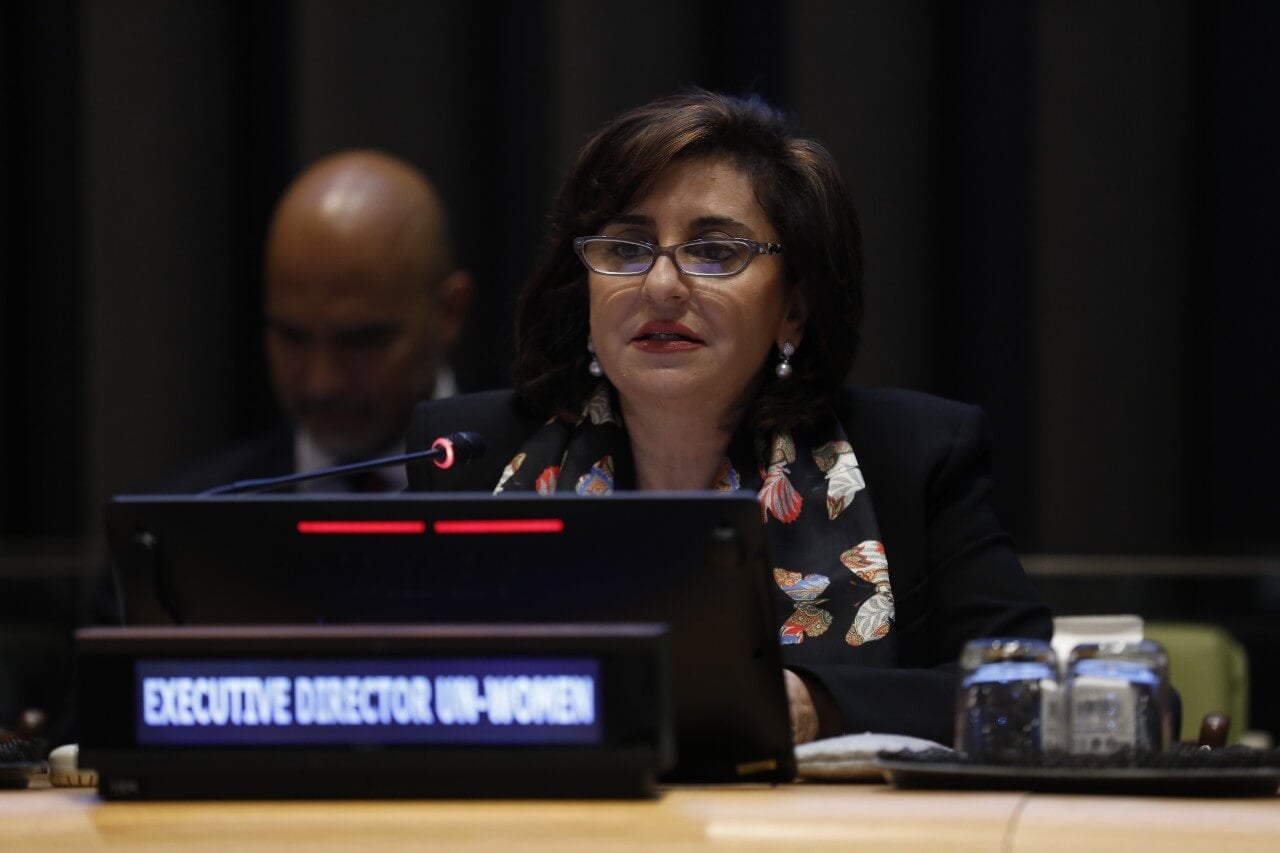Speech: Rising to the promises made in Beijing is the best way to create an equal, just, prosperous world for all | UN Women – Headquarters


Addressing Gender Equality and the Sustainable Development Goals

Excellencies, over the coming days we will hear many esteemed speakers introduced at the General Assembly by His Excellency. However, we will hear “Her Excellency” a mere handful of times. How can it be that at the highest positions of state, at a time when we have together professed loudly and repeatedly our commitment to equality, not least in the political sphere, that only 27 Member States have Madame Presidents or Prime Ministers. In this way we do not only spurn the benefits of women’s leadership, but we also set the poorest of examples for our young women and men.
I will always reiterate that representation matters.
Progress and Challenges
While we celebrate the gains of the last 30 years, be they in education, legal reforms, or closing the gender pay gap, we remain woefully off track. Without acceleration, a girl born today will be 39 years old before women hold as many seats in parliament as men; she will be 68 years old before child marriage ends; and 137 before extreme poverty for women and girls is eradicated. That acceleration is all the more urgent as we approach the 30th anniversary of the Beijing Declaration and Platform for Action amidst the complex challenges of economic instability, climate change, social inequity, geopolitical tensions, conflict, and a very tangible pushback on gender equality.
The Pact for the Future
Excellencies, yesterday you adopted the ambitious Pact for the Future. Cutting across the pact was a commitment to women and girls, to gender equality, to advancing their rights and leadership. Delivering on that promise will be the true test of the Beijing+30 review process and our wider commemorations. This crucial anniversary demands that we reflect on progress made, and prioritize, focusing on high-impact, high-return-on-investment actions so that promises are indeed kept.
Key Areas for Gender Equality
On Saturday, UN Women launched our year-long effort to that end. Based on data, evidence, and inputs from expert consultations, we are proposing six key areas to focus on for gender equality and the Sustainable Development Goals more broadly.
- national action plans to end violence against women and girls;
- securing women’s leadership through temporary special measures;
- unlocking finance to support the care economy and reduce women’s unpaid care work;
- bridging the gender digital gap;
- linking economic empowerment to climate action and transitions to green and blue economies; and
- ensuring accountability to the women, peace and security and humanitarian action agendas.
All across, ensuring that girls and young women are seen, uplifted, and heard.
Achieving Ambitions
The Pact for the Future and accelerating progress on the Sustainable Development Goals are ambitious and rightly so. Achieving their ambitions cannot be done piecemeal, a goal at a time. Instead, they demand action that delivers on multiple fronts at once. That is exactly what gender equality offers.
Rising to the promises made in Beijing is the best way to rise to the 2030 Agenda [for Sustainable Development] and a host of agreements to create an equal, just, prosperous world for all.
UN Women remains your steadfast partner in doing so. I look forward to our discussions and to our ongoing collaboration.
And I thank you.
SDGs, Targets, and Indicators
| SDGs | Targets | Indicators |
|---|---|---|
| SDG 5: Gender Equality | Target 5.5: Ensure women’s full and effective participation and equal opportunities for leadership at all levels of decision-making in political, economic, and public life | Indicator 5.5.1: Proportion of seats held by women in national parliaments and local governments |
| SDG 5: Gender Equality | Target 5.3: Eliminate all harmful practices, such as child, early, and forced marriage and female genital mutilation | Indicator 5.3.1: Proportion of women aged 20-24 years who were married or in a union before age 18 |
| SDG 1: No Poverty | Target 1.1: By 2030, eradicate extreme poverty for all people everywhere, currently measured as people living on less than $1.25 a day | Indicator 1.1.1: Proportion of population below the international poverty line, by sex, age, employment status, and geographical location |
| SDG 10: Reduced Inequalities | Target 10.2: By 2030, empower and promote the social, economic, and political inclusion of all, irrespective of age, sex, disability, race, ethnicity, origin, religion, or economic or other status | Indicator 10.2.1: Proportion of people living below 50 percent of median income, by sex, age, and persons with disabilities |
| SDG 13: Climate Action | Target 13.3: Improve education, awareness-raising, and human and institutional capacity on climate change mitigation, adaptation, impact reduction, and early warning | Indicator 13.3.1: Number of countries that have integrated mitigation, adaptation, impact reduction, and early warning measures into primary, secondary, and tertiary curricula |
| SDG 16: Peace, Justice, and Strong Institutions | Target 16.7: Ensure responsive, inclusive, participatory, and representative decision-making at all levels | Indicator 16.7.1: Proportions of positions (by sex, age, persons with disabilities, and population groups) in public institutions (national and local legislatures, public service, and judiciary) compared to national distributions |
1. Which SDGs are addressed or connected to the issues highlighted in the article?
SDG 5: Gender Equality
The article discusses the lack of representation of women in political leadership positions and the need for gender equality. It also highlights the importance of eliminating harmful practices such as child marriage.
SDG 1: No Poverty
The article mentions the need to eradicate extreme poverty for women and girls.
SDG 10: Reduced Inequalities
The article emphasizes the importance of social, economic, and political inclusion for all, irrespective of gender or other status.
SDG 13: Climate Action
The article mentions the need to link economic empowerment to climate action and transitions to green and blue economies.
SDG 16: Peace, Justice, and Strong Institutions
The article discusses the importance of ensuring responsive, inclusive, participatory, and representative decision-making at all levels.
2. What specific targets under those SDGs can be identified based on the article’s content?
– Target 5.5: Ensure women’s full and effective participation and equal opportunities for leadership at all levels of decision-making in political, economic, and public life.
– Target 5.3: Eliminate all harmful practices, such as child, early, and forced marriage and female genital mutilation.
– Target 1.1: By 2030, eradicate extreme poverty for all people everywhere, currently measured as people living on less than $1.25 a day.
– Target 10.2: By 2030, empower and promote the social, economic, and political inclusion of all, irrespective of age, sex, disability, race, ethnicity, origin, religion, or economic or other status.
– Target 13.3: Improve education, awareness-raising, and human and institutional capacity on climate change mitigation, adaptation, impact reduction, and early warning.
– Target 16.7: Ensure responsive, inclusive, participatory, and representative decision-making at all levels.
3. Are there any indicators mentioned or implied in the article that can be used to measure progress towards the identified targets?
– Indicator 5.5.1: Proportion of seats held by women in national parliaments and local governments.
– Indicator 5.3.1: Proportion of women aged 20-24 years who were married or in a union before age 18.
– Indicator 1.1.1: Proportion of population below the international poverty line, by sex, age, employment status, and geographical location.
– Indicator 10.2.1: Proportion of people living below 50 percent of median income, by sex, age, and persons with disabilities.
– Indicator 13.3.1: Number of countries that have integrated mitigation, adaptation, impact reduction, and early warning measures into primary, secondary, and tertiary curricula.
– Indicator 16.7.1: Proportions of positions (by sex, age, persons with disabilities, and population groups) in public institutions (national and local legislatures, public service, and judiciary) compared to national distributions.
These indicators can be used to measure progress towards the targets mentioned in the article.
4. Table: SDGs, Targets, and Indicators
| SDGs | Targets | Indicators |
|---|---|---|
| SDG 5: Gender Equality | Target 5.5: Ensure women’s full and effective participation and equal opportunities for leadership at all levels of decision-making in political, economic, and public life | Indicator 5.5.1: Proportion of seats held by women in national parliaments and local governments |
| SDG 5: Gender Equality | Target 5.3: Eliminate all harmful practices, such as child, early, and forced marriage and female genital mutilation | Indicator 5.3.1: Proportion of women aged 20-24 years who were married or in a union before age 18 |
| SDG 1: No Poverty | Target 1.1: By 2030, eradicate extreme poverty for all people everywhere, currently measured as people living on less than $1.25 a day | Indicator 1.1.1: Proportion of population below the international poverty line, by sex, age, employment status, and geographical location |
| SDG 10: Reduced Inequalities | Target 10.2: By 2030, empower and promote the social, economic, and political inclusion of all, irrespective of age, sex, disability, race, ethnicity, origin, religion, or economic or other status | Indicator 10.2.1: Proportion of people living below 50 percent of median income, by sex, age, and persons with disabilities |
| SDG 13: Climate Action | Target 13.3: Improve education, awareness-raising, and human and institutional capacity on climate change mitigation, adaptation, impact reduction, and early warning | Indicator 13.3.1: Number of countries that have integrated mitigation, adaptation, impact reduction, and early warning measures into primary, secondary, and tertiary curricula |
| SDG 16: Peace, Justice, and Strong Institutions | Target 16.7: Ensure responsive, inclusive, participatory, and representative decision-making at all levels | Indicator 16.7.1: Proportions of positions (by sex, age, persons with disabilities, and population groups) in public institutions (national and local legislatures, public service, and judiciary) compared to national distributions |
Source: unwomen.org








